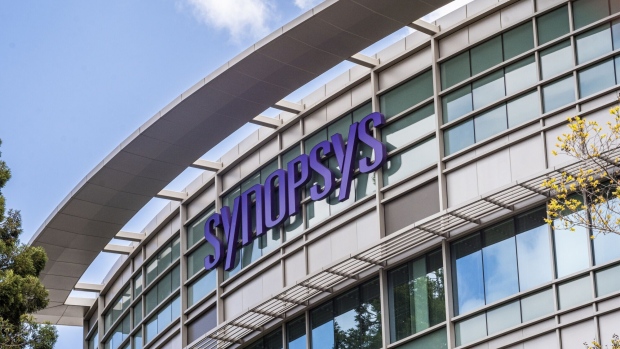In the heart of Silicon Valley, amidst the humming servers and bustling offices, two giants of technology prepared to merge their strengths. Synopsys, a leader in semiconductor design and software, had announced its acquisition of Ansys, renowned for its engineering and product design software. The deal was nothing short of monumental, valued at a staggering $35 billion in cash and stock, marking one of the largest tech mergers in recent years.
The news sent ripples through the tech world, with analysts and industry insiders speculating on the implications of this union. Synopsys’ shares surged by 3% following the announcement, a welcome uptick after a 12% decline fueled by rumors of the impending merger. On the other hand, Ansys’ shares slipped by 4% initially but had risen by over 14% since the talks began in December, showcasing investor confidence in the deal.
As the details of the acquisition emerged, it became clear that Synopsys would pay approximately $390 per share for Ansys, with $197 in cash and the remainder in Synopsys stock. This strategic move would see Ansys shareholders owning 16.5% of Synopsys after the merger—a testament to the confidence in both companies’ future prospects.
During a conference call, Synopsys CEO Sassine Ghazi expressed his excitement about the merger, highlighting the synergies between the two companies and the potential benefits for customers, shareholders, and employees alike. He spoke of a seamless integration, leveraging the strengths of both organizations to push the boundaries of technological innovation further.
However, the road to the merger was not without its challenges. Synopsys revealed that $16 billion of debt financing would be used to fund the acquisition, with the remaining $3 billion coming from the company’s cash reserves. Synopsys CFO Shelagh Glaser cautioned that the deal would not immediately boost earnings, with accretive effects expected to materialize at least a year after the merger’s completion.
In the midst of this monumental deal, the tech industry was abuzz with other significant acquisitions. Microsoft’s acquisition of Activision Blizzard and Broadcom’s acquisition of VMware had made headlines, signaling a wave of consolidation in the tech sector. Cisco, not to be left behind, had announced its own $28 billion acquisition of Splunk, further fueling the frenzy of mergers and acquisitions.
As the tech world braced for the impact of these seismic shifts, one thing was certain—the Silicon Symphony was playing a new tune, one that promised to reshape the landscape of technology for years to come.
(Source: Barron’s | Reuters | CNBC | Bloomberg)







